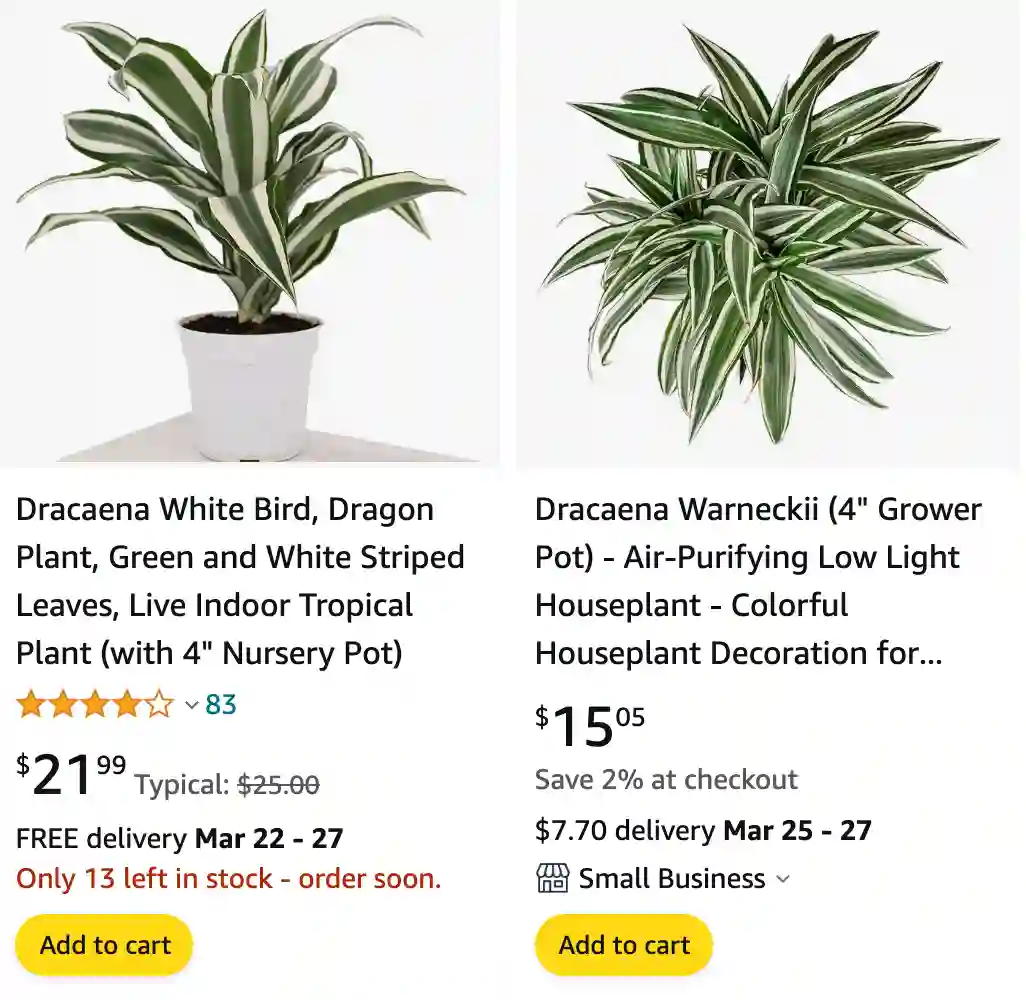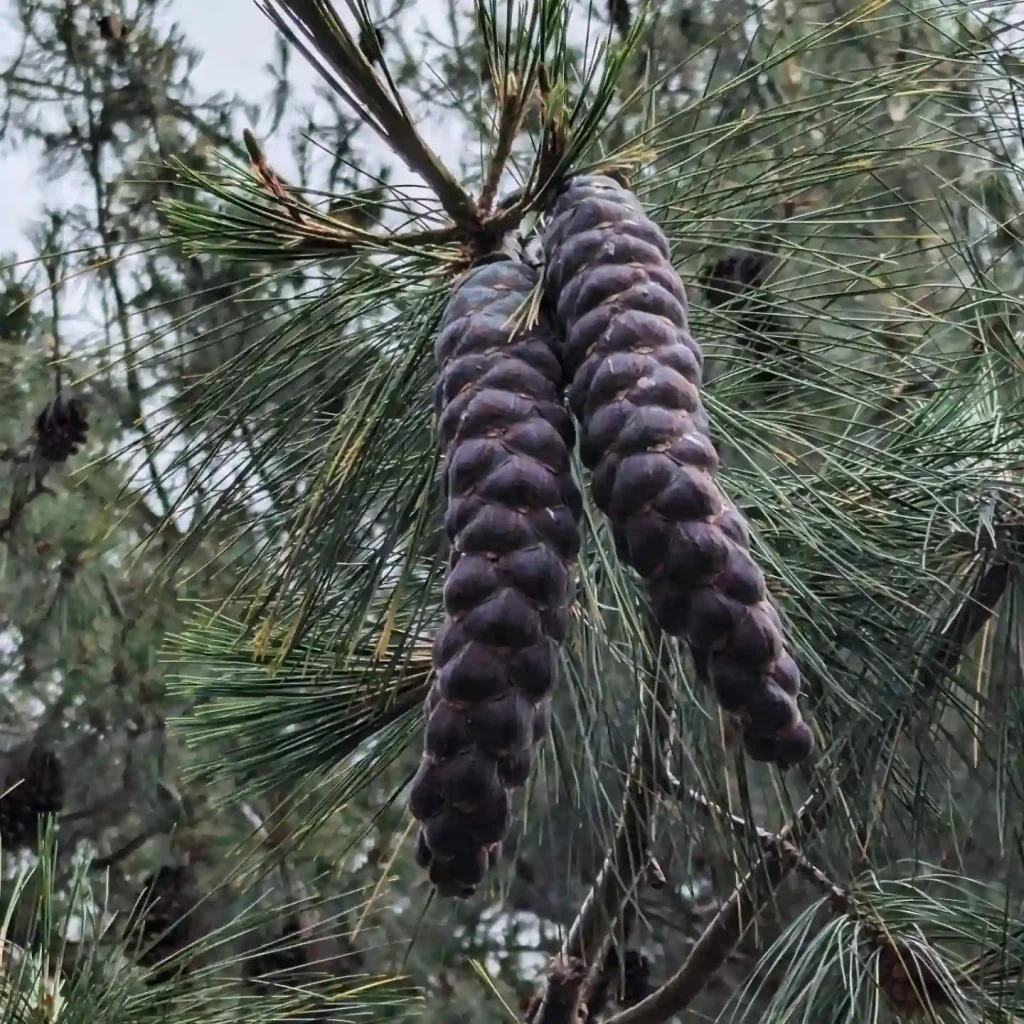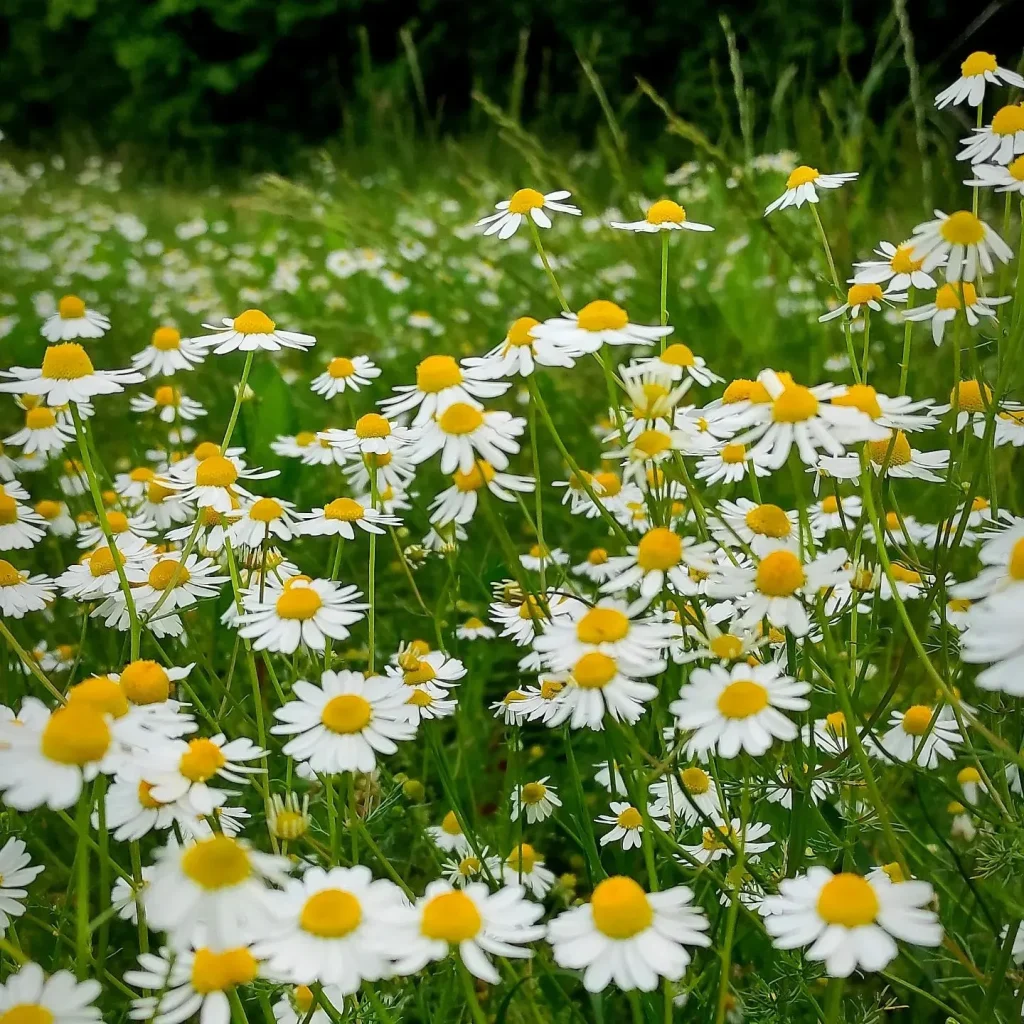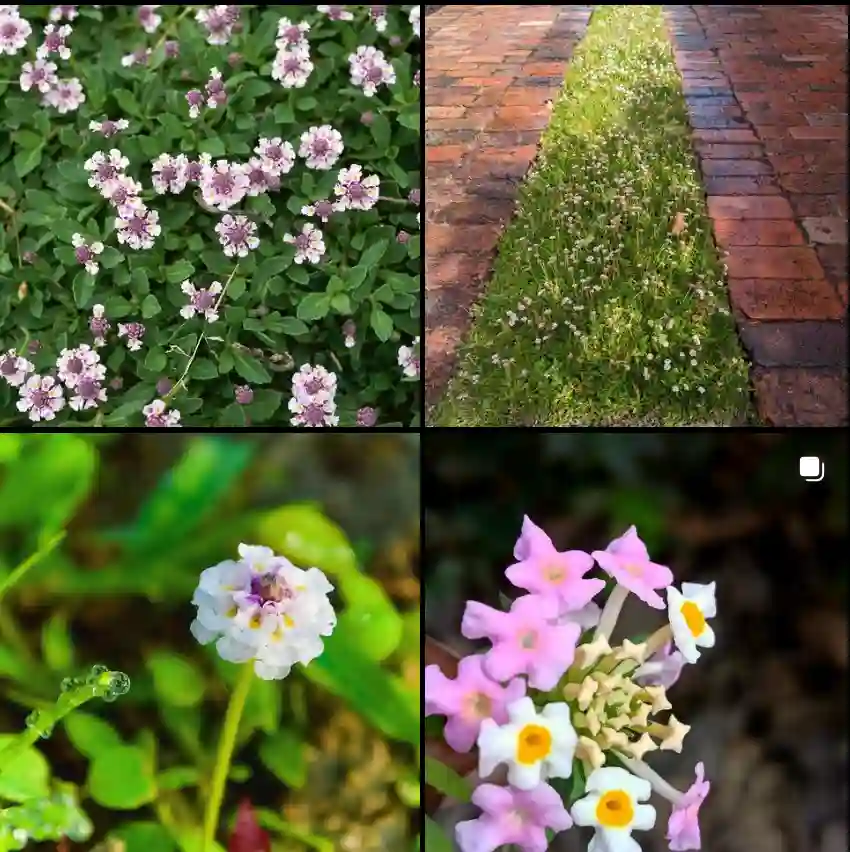
How to care for Dracaena Warneckii?
Here’s a breakdown on how to care for your Dracaena Warneckii, a beautiful and adaptable houseplant:
198 Species in Genus Dracaena
Light:
- Prefers bright, indirect sunlight. Avoid harsh direct sun, especially during the afternoon.
- Can tolerate lower light conditions but may grow slower. East or west-facing windows are ideal spots.
Watering:
- Water moderately, allowing the top inch of soil to dry out completely between waterings.
- Overwatering is a major threat, so err on the side of underwatering.
- Watering frequency depends on season, pot size, and light conditions. Generally, you might water once a week in summer and even less often in winter.
- Use a pot with drainage holes to ensure excess water can escape.
Humidity:
- Adapts well to average household humidity levels.
- Thrives with increased humidity, especially if grown in drier climates or during winter. You can mist the leaves occasionally or use a pebble tray to increase humidity around the plant.
Temperature:
- Prefers warm temperatures between 65°F and 80°F (18°C – 27°C).
- Avoid cold drafts and sudden temperature fluctuations.
Fertilizing:
- Not a heavy feeder. Fertilize lightly during the growing season (spring and summer) with a balanced houseplant fertilizer diluted to half strength.
Additional care tips:
- Wipe leaves occasionally with a damp cloth to remove dust and improve air circulation.
- Repot every 2-3 years or when the plant outgrows its pot. Use a well-draining potting mix.
- Brown leaf tips are a common issue, often caused by underwatering, low humidity, or mineral build-up from tap water. You can trim the brown parts if they’re unsightly.
How to propagate Dracaena Warneckii?
Propagation of my Dracaena Warneckii has been an exciting experiment that I’ve had some success with. I’ve found that stem cuttings from healthy, mature plants root quite easily in water or a well-draining soil mix. I’ve had the best results when taking cuttings in spring or early summer, as the plant seems more receptive to new growth during that time. Patience is key during this process, but seeing those new roots emerge is always a rewarding experience.
How often to water Dracaena Warneckii?
Watering my Dracaena Warneckii has been a balancing act. I’ve discovered that it’s best to water it thoroughly but infrequently, allowing the soil to dry out partially between waterings. Overwatering can lead to root rot, while underwatering can cause the leaves to droop and brown. Finding the right watering schedule has taken some time, but paying attention to the plant’s cues has helped me gauge its needs more accurately over time.
How to prune Dracaena Warneckii?
Pruning my Dracaena Warneckii has become a regular part of its care routine. I’ve found that removing any yellowing or dead leaves helps keep the plant looking tidy and encourages new growth. I’ve also learned to trim back any leggy stems to promote a more compact and bushy appearance. It’s been a bit of a learning curve figuring out the right balance between maintaining its shape and allowing it to grow naturally, but I’ve found that a little pruning goes a long way in keeping my plant healthy and vibrant.
Is Dracaena Warneckii poisonous to cats?
As a cat owner, the safety of my pets is always a top priority, so I did some research to ensure that my Dracaena Warneckii wasn’t harmful to them. Fortunately, I found that while the plant can cause mild gastrointestinal upset if ingested, it’s not considered highly toxic to cats. Still, I’ve taken precautions to keep it out of their reach just to be safe, opting for hanging baskets or placing it on high shelves where they can’t nibble on the leaves.
Is Dracaena Warneckii poisonous to dogs?
When it comes to my furry friends, I always want to be cautious about what plants I have in my home. After some investigation, I found that Dracaena Warneckii can indeed be toxic to dogs if ingested, causing symptoms like vomiting, drooling, and loss of appetite. Knowing this, I’ve made sure to keep my plant well out of reach of my dog, creating a safe environment for both him and my greenery to coexist happily.
Is Osmocote good for Dracaena Warneckii?
I’ve experimented with different fertilizers for my Dracaena Warneckii, and I’ve found that Osmocote works quite well for maintaining its health and promoting growth. I appreciate how easy it is to use and how it provides a slow, consistent release of nutrients over time. With Osmocote, I’ve noticed that my plant seems more vibrant and lush, which gives me confidence that I’m providing it with the nourishment it needs to thrive.
If i die, water my plants!



